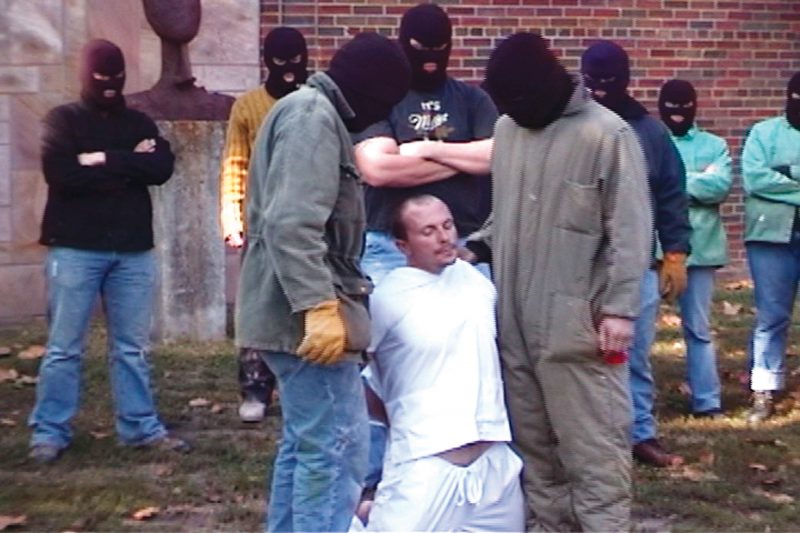The grenade had to go. It was October 2005, and Jesse Albrecht, an MFA student at the University of Iowa and a recent Iraq War veteran, had just finished installing his final art show at a gallery space on campus. A few hours later, he was teaching a class in ceramics when a school administrator phoned him and told him the show would be shut down. The problem was not the fifty-caliber rounds he had arranged in the shape of a giant grinning skull on the floor, nor was it the looming sculptural forms whose hooded silhouettes evoked the prisoners of Abu Ghraib. It was a glittery object that looked very much like a combat-issue grenade. Albrecht tried to explain that it was a plastic dummy, doctored with duct tape, Bondo, and a coat of gunmetal-gray paint. He was told that didn’t matter. In a time when fears of terrorism ran high, he had to lose the grenade or he would lose the show.
Albrecht found the ultimatum difficult to swallow. In his eyes, the war and his art were inseparable. He had been in his second year at grad school, studying art, in September 2001, when the planes crashed into the towers. Eighteen months later, he was on his way to Mosul with the Iowa National Guard. Part of a unit attached to the 101st Airborne Division, he served as a combat medic, treating wounded soldiers, running security convoys, and bringing doctors and medical supplies to hospitals around the city in one of the soft-shell Humvees that would become emblematic of just how unprepared the US military was for the kind of war it found in Iraq. He found creative ways to cope. After reinforcing the Humvee with sandbags and soldered metal doors, Albrecht and one of his buddies fixed a long metal spike to its roof and christened it with a new name, which they wrote on the windshield in marker: War Pig. Meanwhile, his sketchbook became a repository for things he saw in the field: abundant graffiti, crumbling ruins, and the ghostly presence of Saddam Hussein, whose face appeared in tattered posters and on the faces of junk-shop watches.

When the insurgency picked up, and his aid station saw more action, Albrecht turned his uniform into a canvas, sketching dice and clovers along the inside of his cap and across the flaps of his medical kit. Every morning before heading out, he’d sit on his bunk with his cap in his hand and say the Lord’s Prayer. Keeping his thumbs and eyes on the...
You have reached your article limit
Sign up for a digital subscription and continue reading all new issues, plus our entire archives, for just $1.50/month.
Already a subscriber? Sign in




